Page 322 of 352 pages « First < 320 321 322 323 324 > Last »
Black American
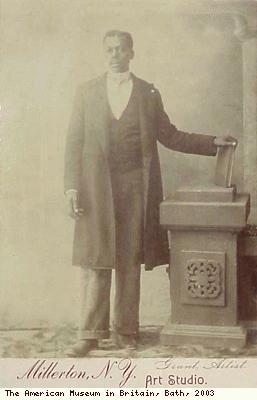
Description:
Photograph: Black American . Full-length studio portrait of a man. Framed.
Contributed by John Judkyn Memorial.
Copyright: The American Museum in Britain, Bath
Object ID:72.142.8
Black American photograph
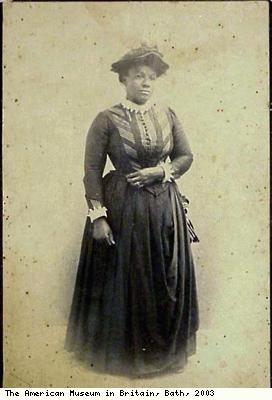
Description:
Photograph: Black American .Full-length studio portrait of a woman.
Contributed by John Judkyn Memorial
Date: unknown
Copyright: The American Museum in Britain, Bath
Object ID:72.142.9
Uncle Tom’s Cabin, volume 1
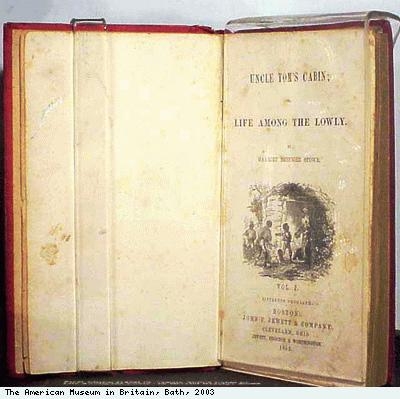
Description:
Uncle Tom’s Cabin , Volume 1. Written by Harriet Beecher Stowe. Published by John P Jewett and Company, Clevelans, Ohio. Uncle Tom’s Cabin was an emotional account of slavery, from a slave’s point of view.
Contributed by John Judkyn Memorial.
Creator: Harriet Beecher Stowe
Date: 19th century
Copyright: The American Museum in Britain, Bath
Object ID:64.546.a
Petition
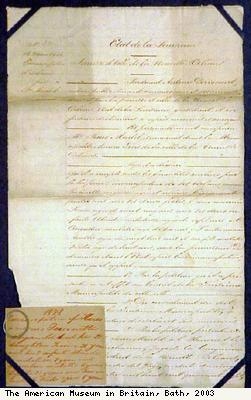
Description:
Slave emancipation (end of slavery) petition. No 32, 16 March 1848. Pierre Martel emancipating (freeing) his slaves, Percinette, her daughter Louise (and Louises 2 children) and Agathe (and her son). Framed.
Contributed by John Judkyn Memorial
Date: 16 March 1848
Copyright: The American Museum in Britain, Bath
Object ID:72.209
Poster for New Orleans Strutters

Description:
Theatre poster for Coy Herndon’s New Orleans Strutters .
A poster advertising a jazz band, with a juggler (Herndon) and dancers (the Strutters ).
Quotations from the poster read:
…An American Fun Salad with Bronze French Dressing….20 Celebrated Colored Artists….Greatest Colored Novelty Acts in America….A Creole Cocktail with a Kick…..World’s Champion Hoop Roller – Coy Herndon…..New Orleans Strutters Jazz Band…
The language used to describe people of African descent in the 18th, 19th and 20th centuries is unacceptable in today’s terms. We cannot avoid using this language in its original context. To change the words would impose 20th century attitudes on history.
Contributed by John Judkyn Memorial.
Date: unknown
Copyright: The American Museum in Britain, Bath
Object ID:72.146.5
Mortgage of plantation and 99 slaves
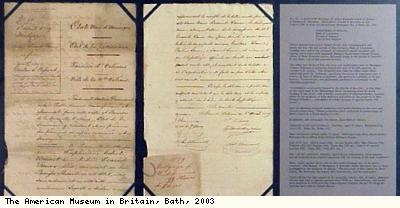
Description:
Mortgage of plantation and 99 slaves.
Mortgage by widow Evariste Lauve in favour of Gustave S Dufossat.
Evariste Lauve owed Gustave S Dufossat about £600.
To settle the debts, she agreed payment by a mortgage on two properties. In addition she mortgaged 99 slaves.
Recorded in Parish of Iberville on the 6 April 1859, state of Louisiana – Parish of Orleans, USA.
Contributed by John Judkyn Memorial.
Date: 6 April 1859
Copyright: The American Museum in Britain, Bath
Object ID:72.210
End of slavery petition and translation

Description:
Slave emancipation (end of slavery) petition and translation. Madame Jules Le Blanc. She declares the receipt of $950 from her slave Celina whereby the latter purchases her freedom.
Contributed by John Judkyn Memorial.
Creator: Madame Jules Le Blanc
Date: unknown
Copyright: The American Museum in Britain, Bath
Object ID:72.211
Sale document
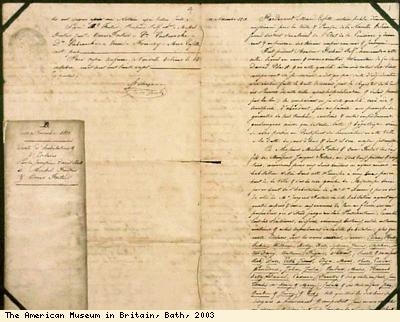
Description:
Document regarding the sale of a plantation property with 40 slaves. Property sold by the estate of Daniel Clark.
Contributed by John Judkyn Memorial.
Date: unknown
Copyright: The American Museum in Britain, Bath
Object ID:72.212
End of slavery poster
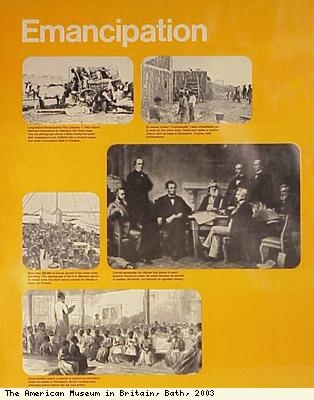
Description:
Poster: Emancipation (end of slavery).
Top left picture
Long before Emancipation Day (January 1, 1863), slaves liberated themselves by fleeing to the Union lines. This old photograph shows a slave family that piled their possessions and children into a covered wagon and made a successful dash for freedom.
Top right picture
Ex-slaves (called Contrabands ) were immediately put to work for the Union Army. Some were spies or scouts: others, such as these in Alexandria, Virginia USA, built fortifications.
Middle left picture
More than 200,000 ex-slaves served in the Union Army and Navy. This photograph of the US Mendota shows its mixed crew. Six black sailors earned the Medal of Honor for bravery.
Middle right picture
Lincoln persuades his cabinet that slaves in every territory should be freed. He acted because he wanted to weaken the South, not because he opposed slavery.
Bottom picture
Emancipation meant a chance to receive an education. These ex-slaves in Charleston, South Carolina USA were attending school before the war had ended.
Contributed by John Judkyn Memorial
Date: c1860s
Copyright: The American Museum in Britain, Bath
Object ID:74.179.2
Civil War poster
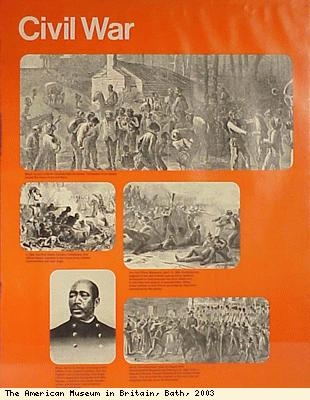
Description:
Poster: Civil War.
Top picture.
Black troops in North Carolina, USA, liberated slaves. Thousands of ex-slaves joined the Union Army and Navy.
Middle left picture.
In 1862, the First South Carolina Volunteers, first official Negro regiment in the Union Army, battled Confederates and their dogs.
Middle right picture.
The Fort Pillow Massacre, April 12, 1864. Confederates, angered at the use of black men as Union soldiers, threatened to treat prisoners as slave rebels and to sell them into slavery or execute them. When these soldiers at Fort Pillow surrendered, they were massacred by the enemy.
Bottom left picture.
Major Martin R Delany, first Negro field officer in the countrys history, had the highest rank of the seventy-five black officers appointed during the Civil War. Delany, a medical man, world traveller, writer, and lecturer, was extremely proud that he was black.
Bottom right picture.
Black Charlestonians greet the Negro 55th Massachusetts Regiment on February 21, 1865, when it liberated the city. Colonel Charles B Fox (riding horse) wrote, The glory and the triumph of this hour can be imagined, but can never be described.
The American Civil War began in 1861. It was fought mainly over the issue of whether the different states in the Union had the right to allow slavery in their own state. Most of the southern states supported slavery, most of the northern states were opposed to it. The war ended in 1865, and slavery was abolished throughout the United States.
Contributed by John Judkyn Memorial.
The language used to describe people of African descent in the 18th, 19th and 20th centuries is unacceptable in today’s terms. We cannot avoid using this language in its original context. To change the words would impose 20th century attitudes on history.
Date: c1860s
Copyright: The American Museum in Britain, Bath
Object ID:74.179.1
Page 322 of 352 pages « First < 320 321 322 323 324 > Last »

